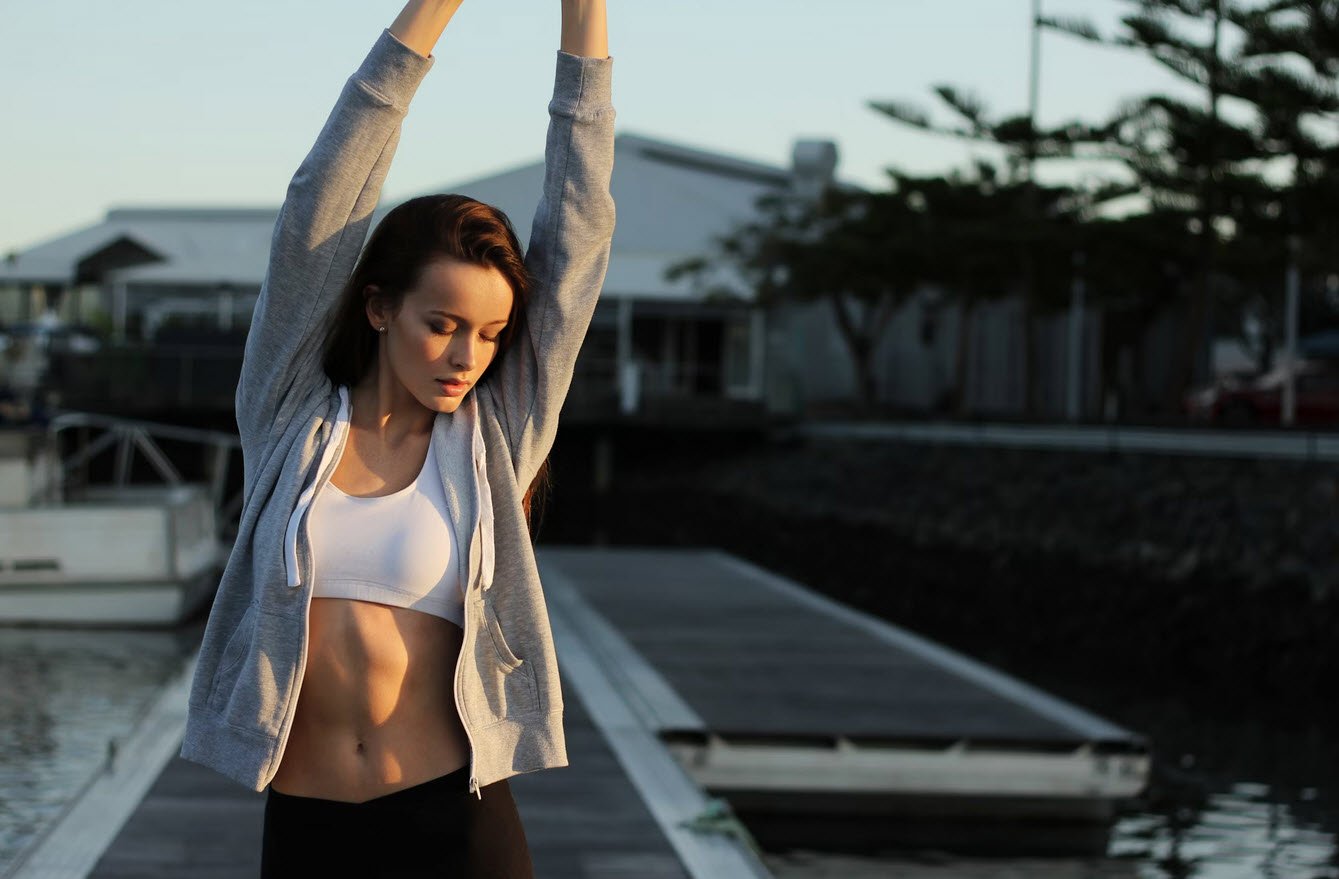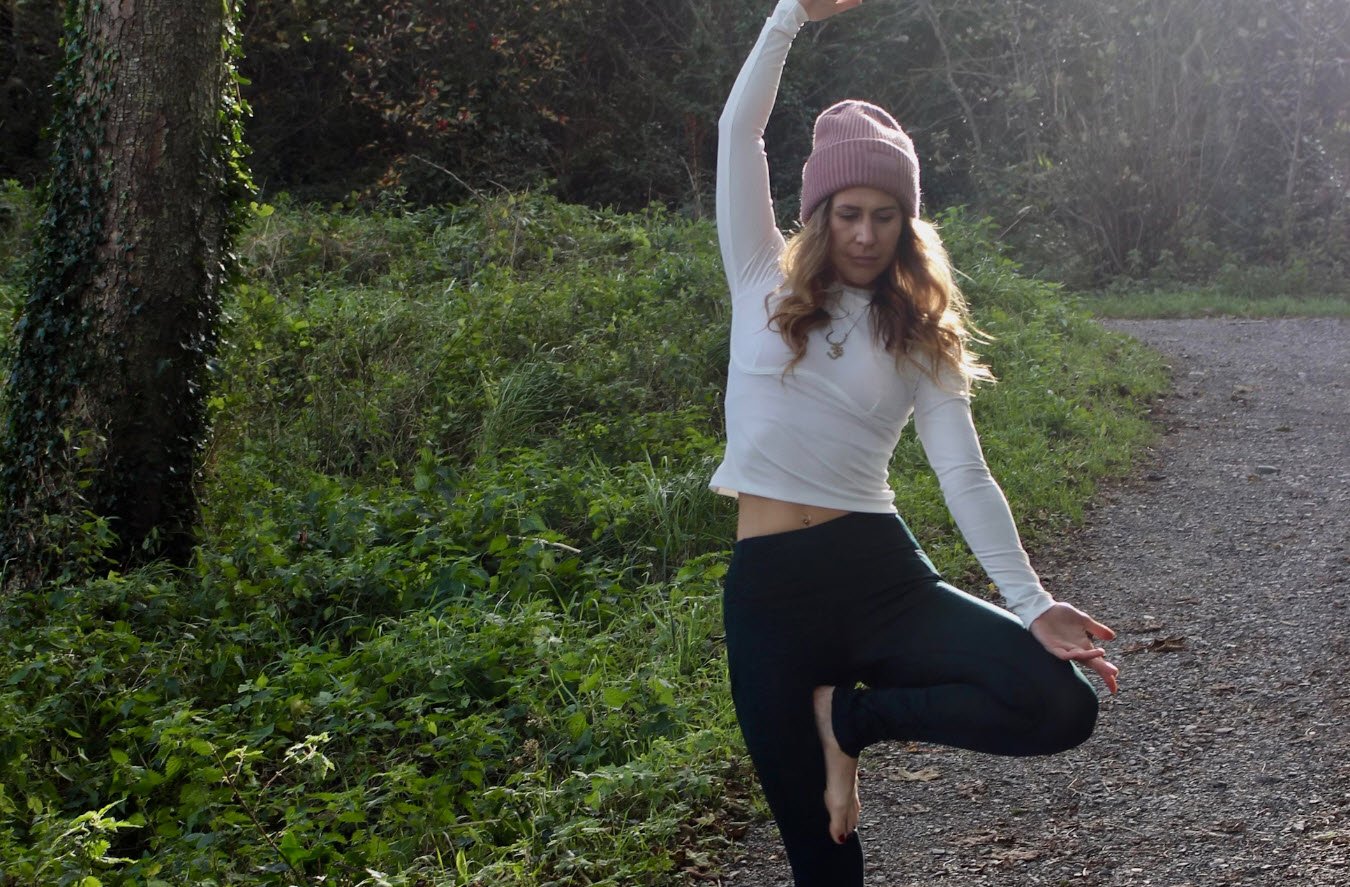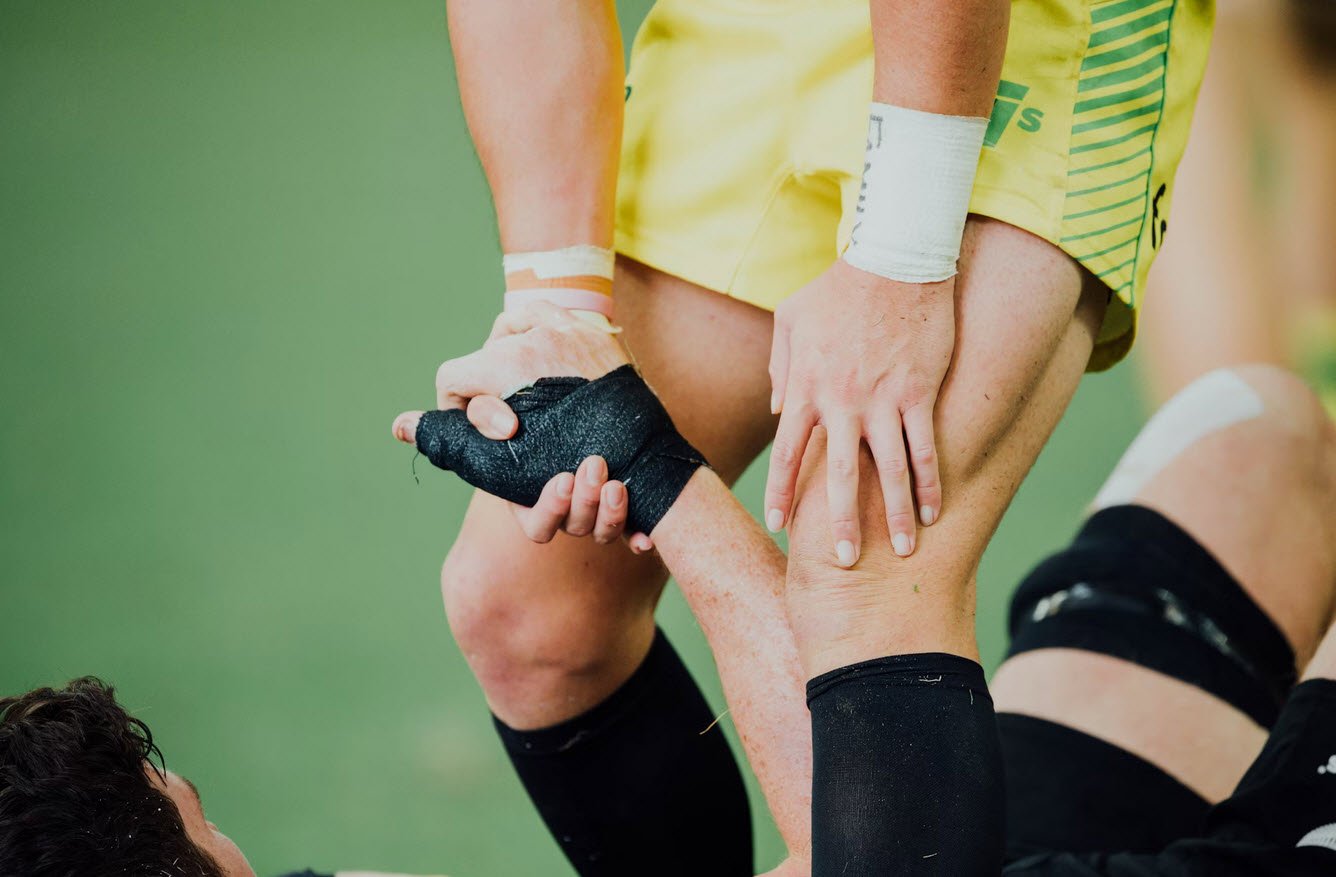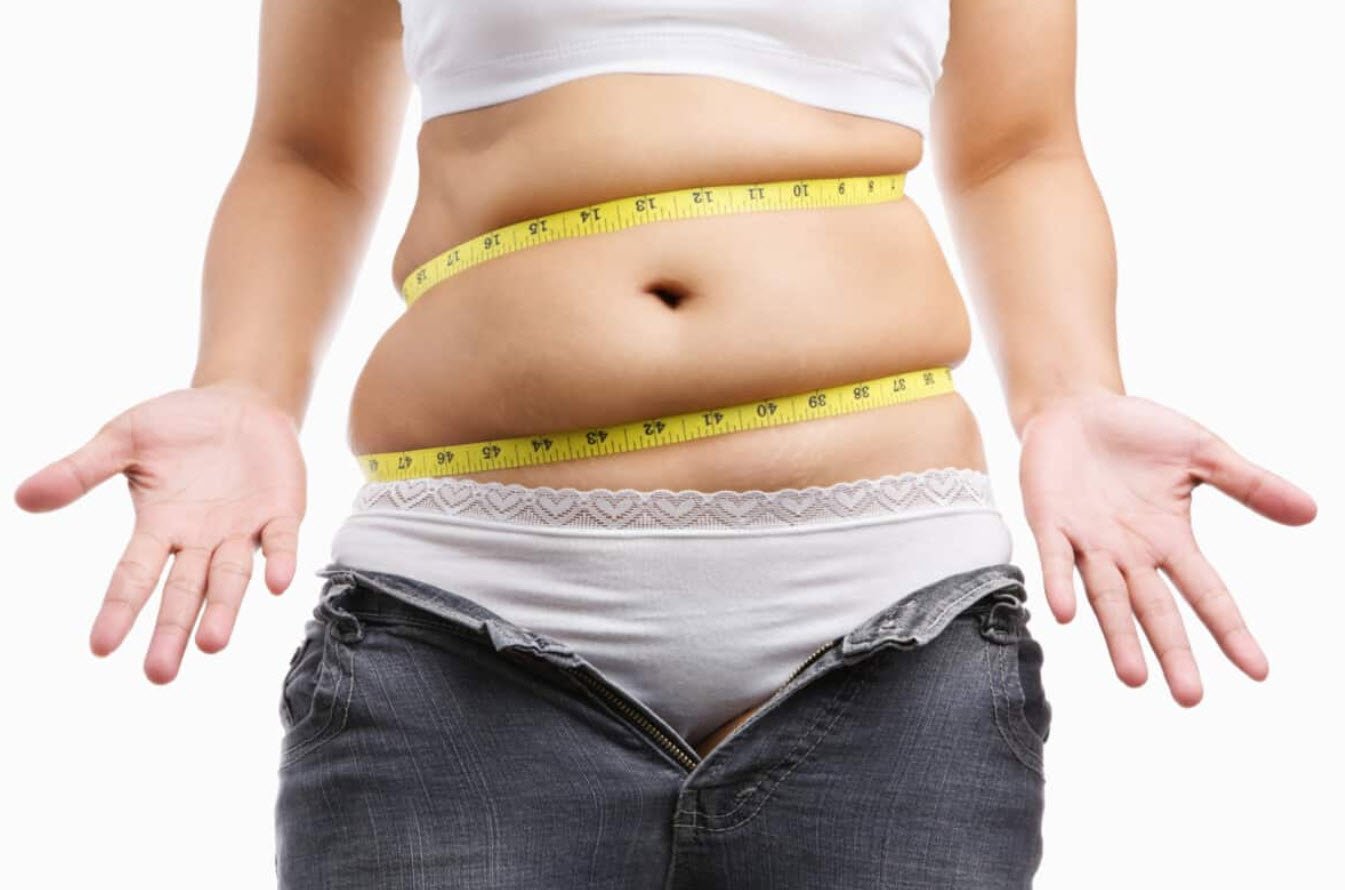
Your lymphatic system collects and filters fluid from your body and returns it to your blood stream. The lymphatic system plays an important role in your immune function. It is made up of lymph nodes that are connected by lymph vessels.
Also Read: Three Stages of Pregnancy – First, Second and Third Trimester
Large groups or chains of lymph nodes can be found in your neck, under your arms and in your groin (see picture to the right). These nodes are often removed during cancer surgery. You may also receive radiation therapy to these areas. Both of these treatments can prevent fluid from flowing properly, which causes a chronic swelling called lymphedema.
How does self-massage help with lymphedema?
Manual Lymph Drainage, or MLD, is a gentle skin massage that helps move extra fluid from an area that is swollen (or is at risk of becoming swollen), into an area where the lymph nodes are working properly. This is done by stimulating contractions of lymphatic vessels.
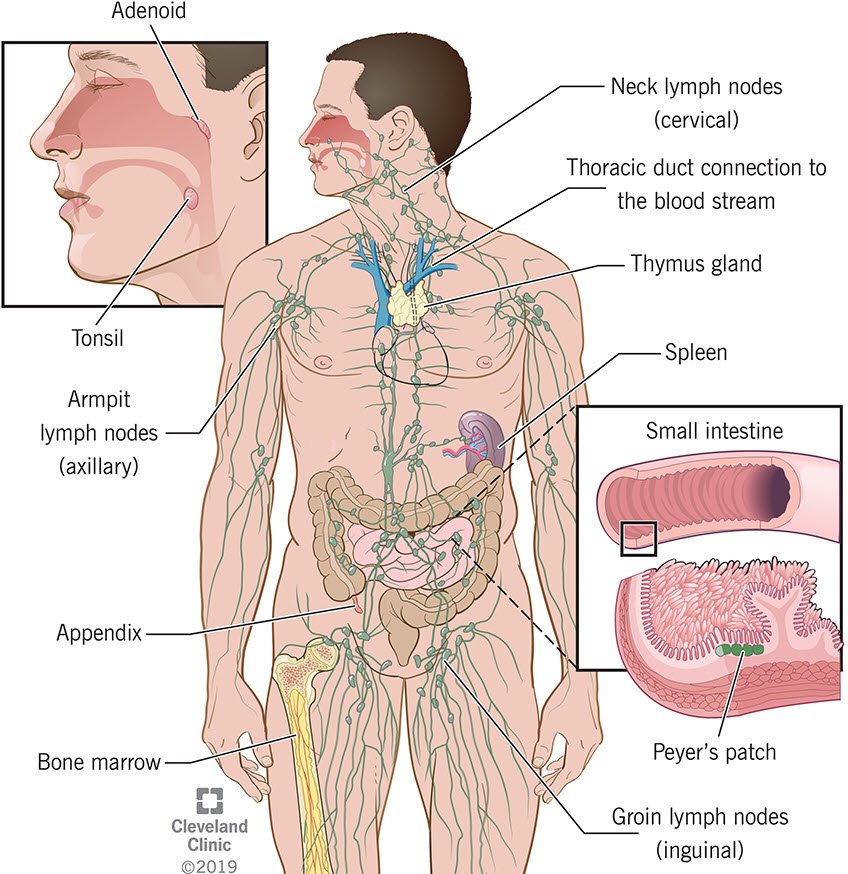
If you have swelling in your abdomen, groin, hip(s), genital area and leg(s), you will be moving fluid away from where you have swelling.
These areas can include:
- affected leg(s) and hip(s)
- abdomen (pelvic area)
- groin
- genital area
Extra fluid can be moved to your:
- underarm(s)
- unaffected groin
Instructions for doing self-massage
- Use a light pressure and keep your hands soft and relaxed. Use just enough pressure to gently stretch the skin as far as it naturally goes and then release the pressure. Let your skin come back as it was. If you can feel your muscles underneath your fingers, then you are pressing too hard.
- Use the flats of your hands instead of your fingertips. This allows more contact with the skin to stimulate the lymph vessels.
- Massage towards areas of your body that have not been treated for cancer.
- Make sure you are comfortable while doing the massage. You can try a seated, standing or lying down position.
- Try to do self-massage every day.
- If you need to do the massage on both sides of your body, start on one side of your body and go through each step. Once you have completed the steps on one side, repeat them on the other side of your body.
What to avoid
- Do not strain your shoulders, neck, arm or hand.
- Do not self-massage in a way that causes pain.
- Do not continue self-massage if it is causing you pain.
- Do not self-massage if you have an infection in that area.
Important: Do NOT do self-massage if you have an infection in your abdomen, leg(s) or feet. Signs of infection may include:
- swelling in these areas and redness of the skin (this redness can quickly spread)
- feeling pain in your leg(s) or feet
- feeling tenderness and/or warmth in one or both legs or feet
- having a fever or chills and feeling unwell
If you have an infection or think you have an infection, go to your:
- family doctor
- urgent care clinic
- walk-in clinic
- hospital emergency department
Try different ways to make self-massage a part of your routine. Some people prefer to do self-massage while they are watching TV or having a shower so that it does not take time away from their day. Other people prefer to use self-massage as time for themselves or as part of their relaxation routine.
Steps 1 to 4 stimulate your lymph system
1. Deep breathing
A very important part of your self-care is deep breathing. Deep breathing helps to stimulate lymphatic system in your whole body. You can practice deep breathing anytime!
- Place the palms/flats of your hands on your stomach.
- Slowly, breathe in deeply through your nose, and let your stomach expand.
- Breathe out slowly through pursed lips (as if you were about to blow out a candle), and let your stomach flatten.
- Repeat 5 times. Take a short rest between each breath so you do not get dizzy.
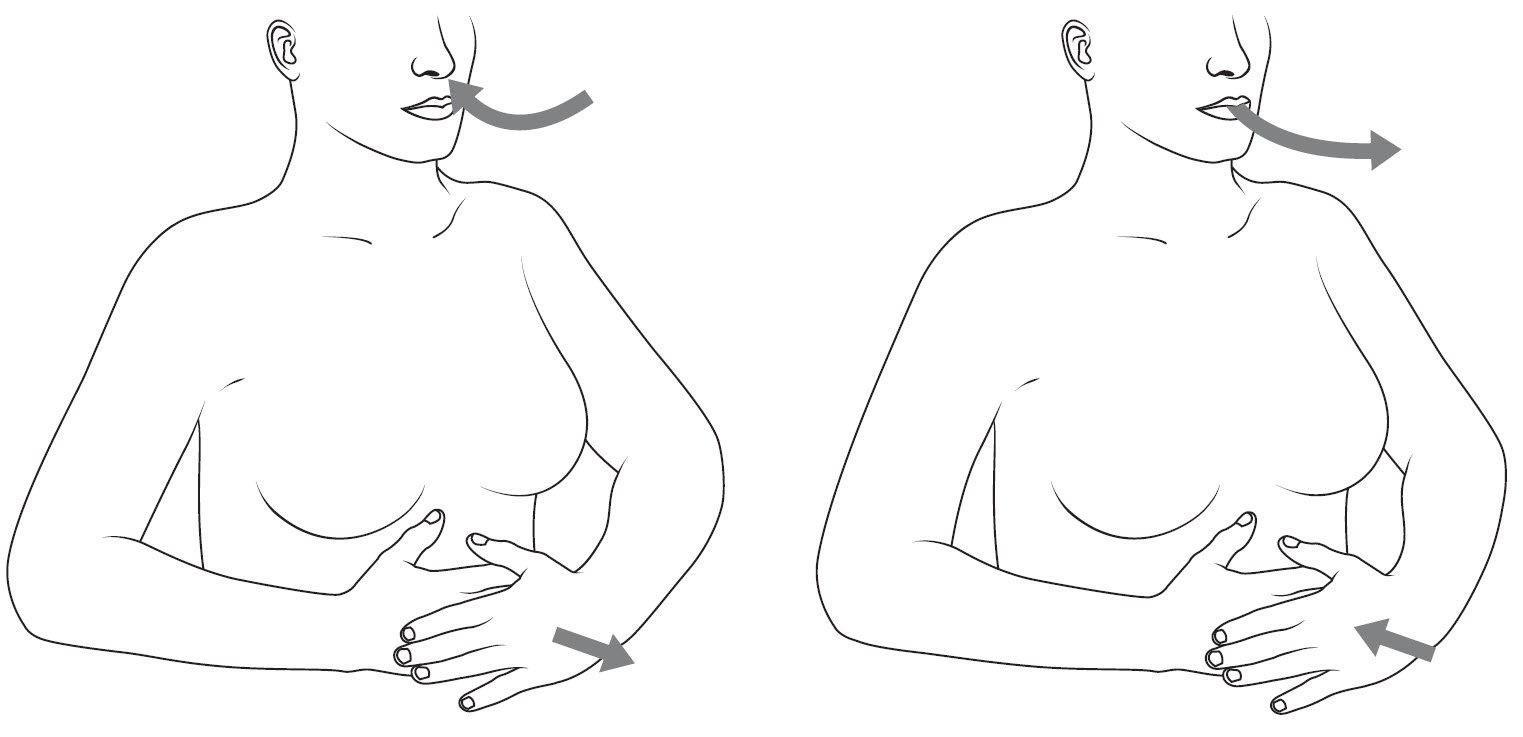
2. Stretch and release the skin at the front of your neck
This step helps lymph fluid drain back to your bloodstream at your neck. You can massage 1 side at a time or both sides at the same time. Cross your hands if you are doing both at the same time.
- Place the flats of your 2nd and 3rd fingers on either side of your neck, just above your collarbone. Do a shoulder shrug up and feel the dip in the skin. This is the correct position.
- Massage down and inwards towards your collarbone.
- Always keep your fingers above your collarbone. Gently stretch the skin just as far as it naturally goes and release.
- This massage will look like two “J” strokes facing one another.
- Repeat 15 times.
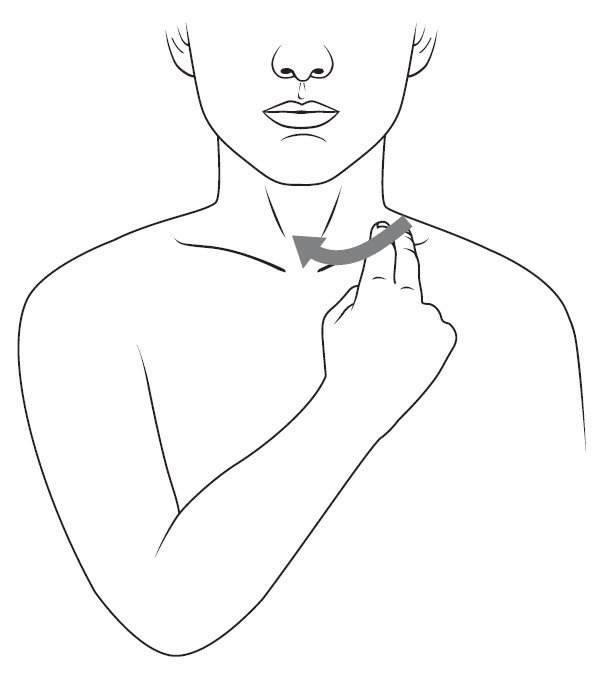
3. Stretch and release the skin at the side of your neck
You can massage one side at a time, or do both sides together.
- Place your flat hands on either side of your neck, just under your ears.
- Gently stretch the skin back (away from your face) and down, then release.
- Try to massage your neck in a slow, gentle way, following a rhythm.
- Repeat 10 to 15 times. Remember: Keep your pressure light.
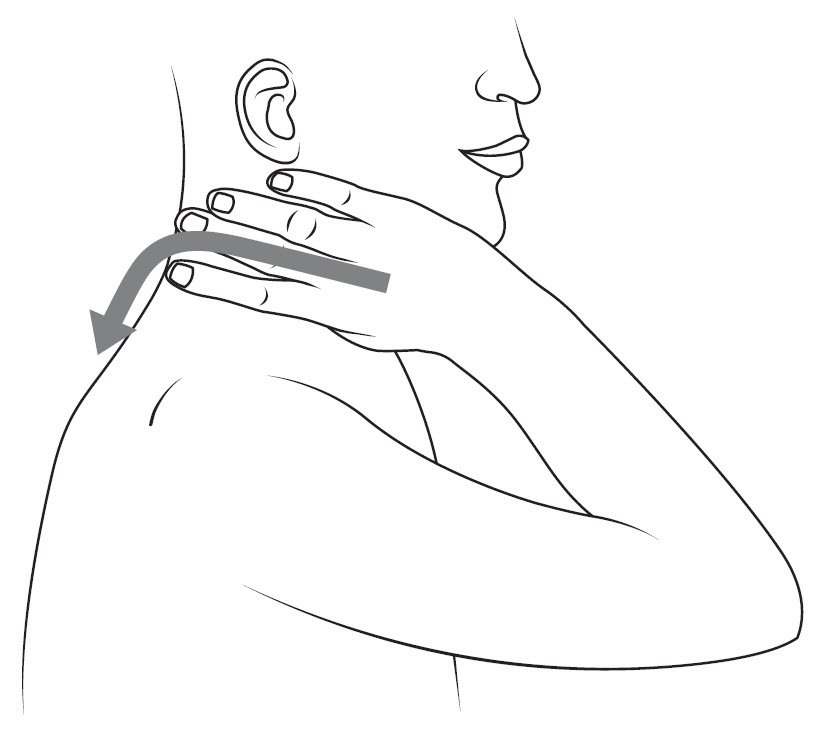
4. Stretch and release the skin on the back of your neck
- Place your flat hands on the back of your neck, just below your hairline on either side of your spine.
- Stretch the skin towards your spine and then down towards the base of your neck and release.
- Repeat 10 to 15 times.
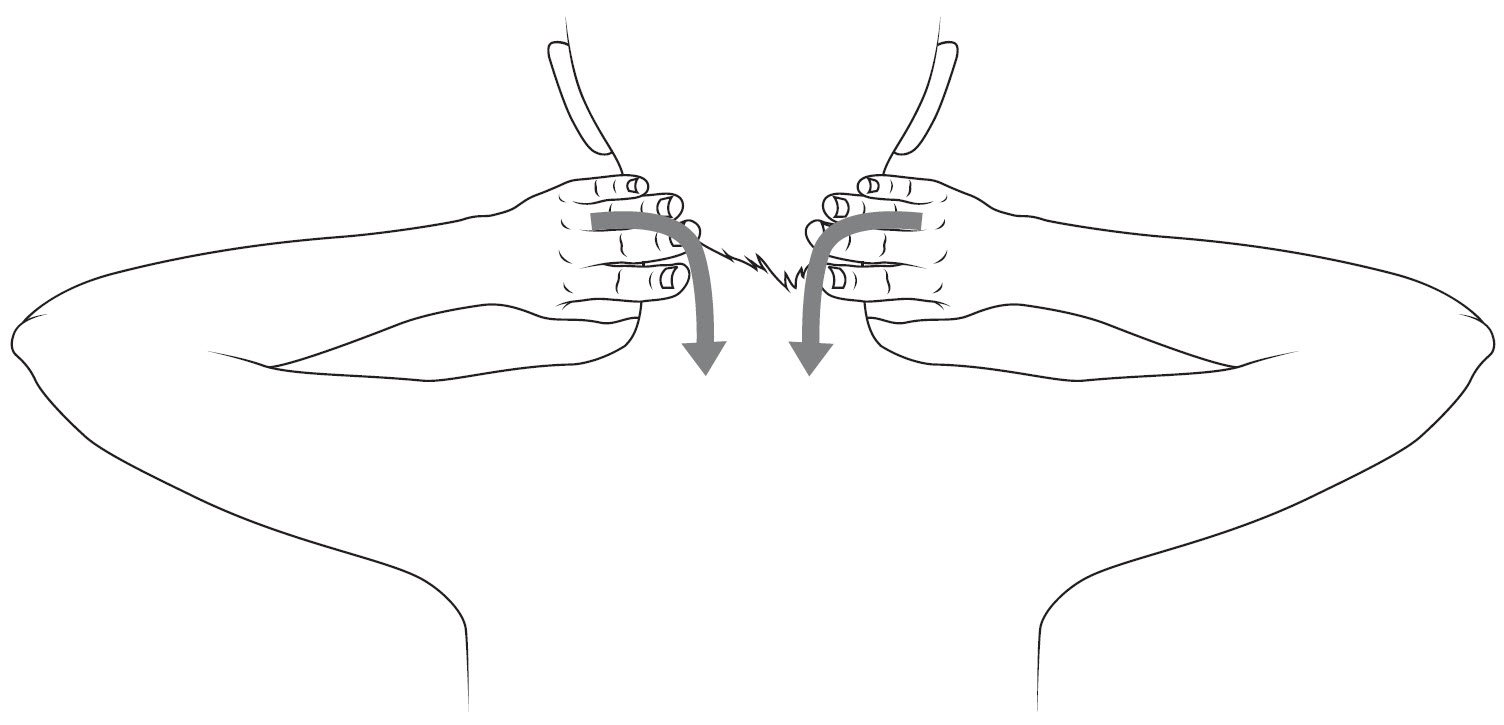
5. Prepare your chest
This step prepares the lymph nodes in your under arm to take in lymph fluid from your affected abdomen and upper leg. For step 5 and 6, place your arm in a comfortable position. Keep it slightly raised and supported.
- Place your palm against your underarm on the side of your body that has lymphedema.
- Gently pull up and in toward your body, then release.
- Repeat 10 to 15 times.
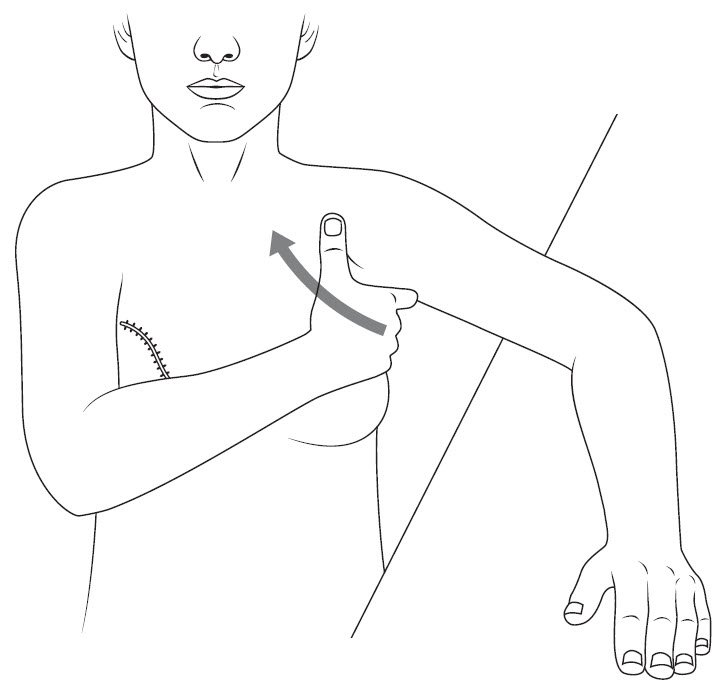
6. Stretch and release the skin from your hip to your underarm
Do this step on the side of your body that has lymphedema. This step will direct fluid away from your hip to your underarm.
- Place your hand on your hip on the side that has lymphedema.
- Gently massage from the outside of your hip (beside your hip bone) using several small strokes. Massage upward along the side of your body to your underarm.
- Gently stretch the skin as far as it goes naturally and release.
- Repeat 10 to 15 times.
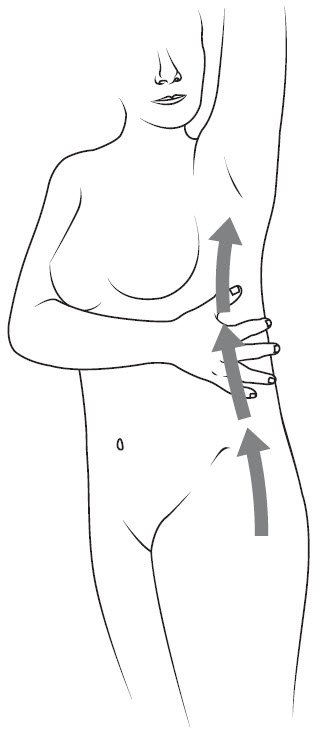
7. Stretch and release the skin from the inside of your leg to the outside of your leg
Fluid normally flows up the inside of your leg into the lymph nodes in your groin. This step directs fluid away from the inside of your leg to the side of your leg and up the side of your body into your underarm.
Suggested Read: Top 10 Essential Aromatherapy Oils For Your Better Health
When doing this massage, make sure you are comfortable. Do not strain your back, wrists or hands. You can also add deep breathing to make the massage even more effective.
- Start at the top of your leg.
- Place one hand on the inside of your leg and one hand on the back of your leg, without straining your wrist, hand or arm.
- Gently stretch and release the skin from the inside of your leg towards the side of your leg and up towards your hip.
- Shift your hands lower on your leg and repeat. Keep shifting down and repeating this step until you reach your knee as shown in the pictures.
- Now place your hand on the outside of your knee. Switching between your left and right hands, stretch the skin in an upward motion towards your underarm.
- Repeat each section 10 to 15 times.

8. Prepare your knee
This step will prepare the lymph nodes in the back of your knee to take in fluid.
- Place your hands behind your knee
- Gently pump the back of your knee in a rolling, upward motion (making a “J” shape).
- Repeat 10 to 15 times.
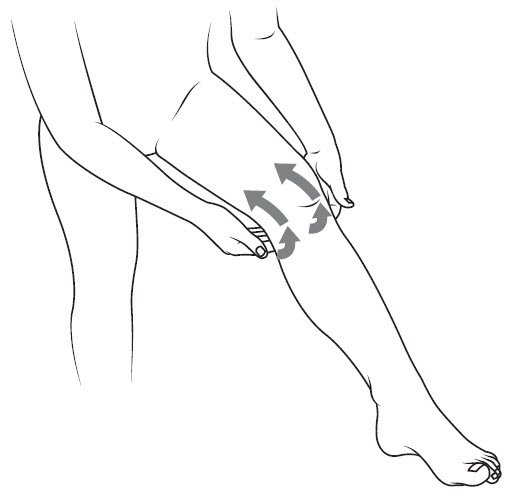
9. Stretch and release the skin on your lower leg
- Place one hand on your shin and the other hand on the back of your lower leg, just below your knee.
- Gently stretch the skin towards your upper leg and release.
- Shift your hands down and repeat this upward motion until you reach your ankle.
- Remember to stretch and release the skin up towards your knee.
- Repeat 10 to 15 times.
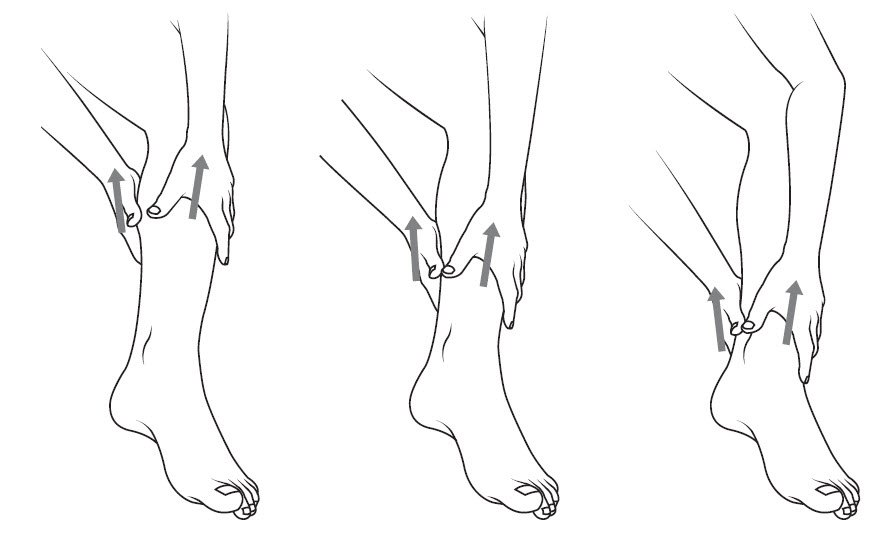
10. Stretch and release the skin on your ankle and foot
- Continue the stroke from the previous step on your ankle and foot.
- Remember to gently stretch the skin as far as it goes naturally.
- Always stroke up.
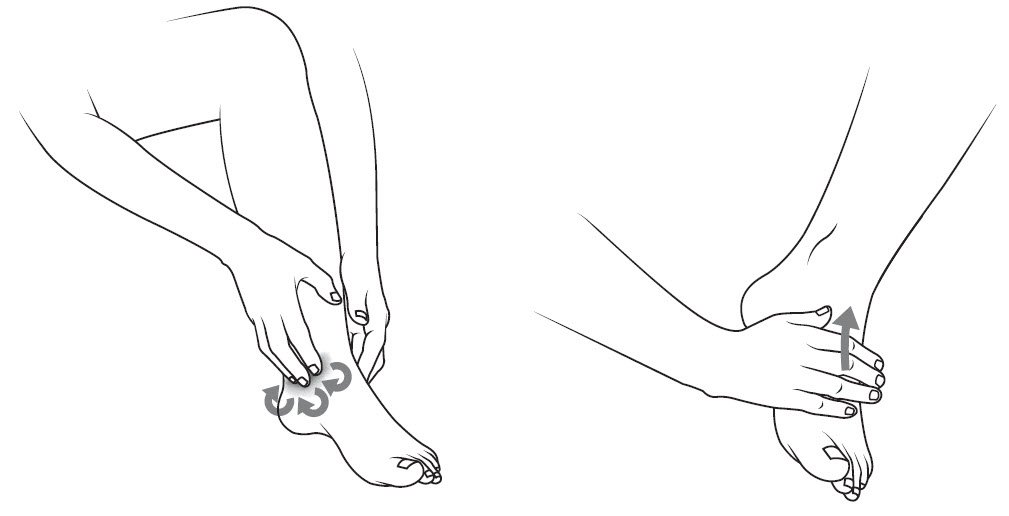
11. Massage for swollen toes
Do the following step if your toes are swollen.
- Place your index finger and thumb on the base of your toe.
- Gently push the fluid towards your foot.
- Repeat often.
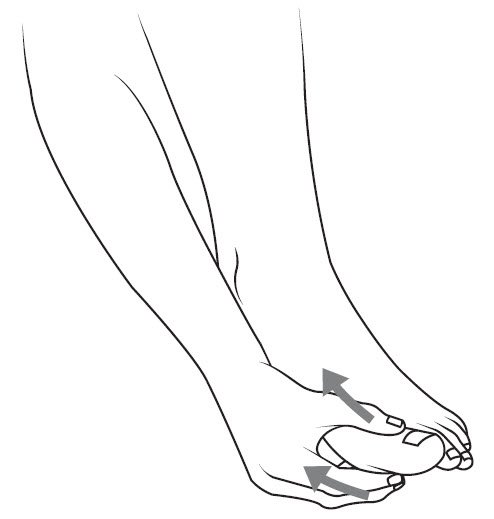
Source: Patient EducationYou may also like:
- 5 Signs of Hormonal Imbalance in Women Suffering from PCOS
- Top Effective Tips To Achieve Safe and Sustainable Fast Weight Loss
- Empowering Students: Applying ABA Techniques In The Classroom
- Assessing Cancer Treatment: Tools And Techniques For Monitoring Efficacy
- Eye Doctors’ Contributions To Long-Term Vision Clarity
- Understanding Neurosurgeons: Specialists In Brain And Spinal Cord Health
- Common Causes of Chest Pain You Should Know
- Top 10 Weight Loss Myths: Don’t Fall Victim to Them
- Incorporating Fitness into a Busy Lifestyle for Effective Weight Loss
- Low GI Alcohol and Healthy Food Choices for Sustainable Weight Loss

